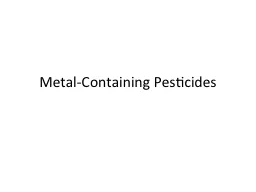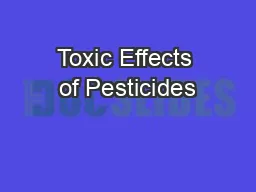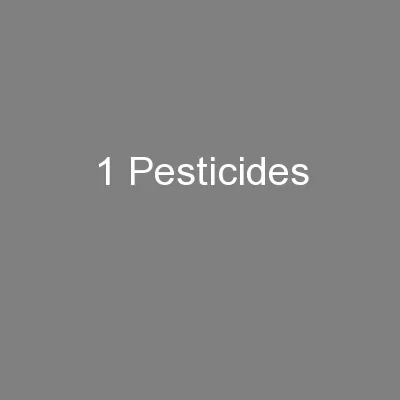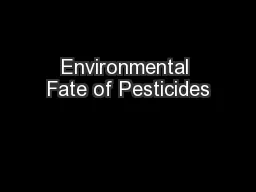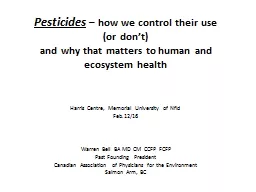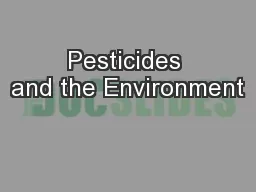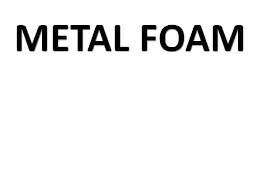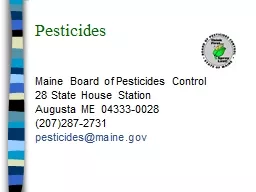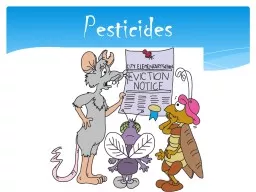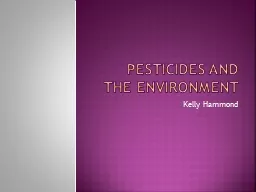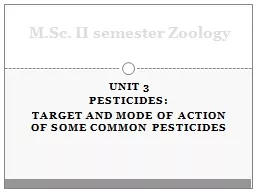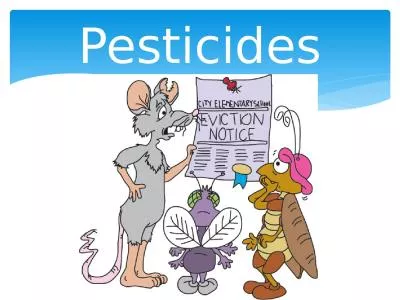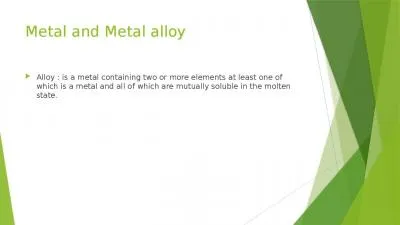PPT-Metal-Containing Pesticides
Author : ellena-manuel | Published Date : 2016-03-08
Metals Essential Zinc Copper Iron Chromium Phosphorus Selenium Cobalt All metals are toxic in excess Neutral or detrimental Tin Bismuth Boron Barium Antimony Arsenic
Presentation Embed Code
Download Presentation
Download Presentation The PPT/PDF document "Metal-Containing Pesticides" is the property of its rightful owner. Permission is granted to download and print the materials on this website for personal, non-commercial use only, and to display it on your personal computer provided you do not modify the materials and that you retain all copyright notices contained in the materials. By downloading content from our website, you accept the terms of this agreement.
Metal-Containing Pesticides: Transcript
Download Rules Of Document
"Metal-Containing Pesticides"The content belongs to its owner. You may download and print it for personal use, without modification, and keep all copyright notices. By downloading, you agree to these terms.
Related Documents

